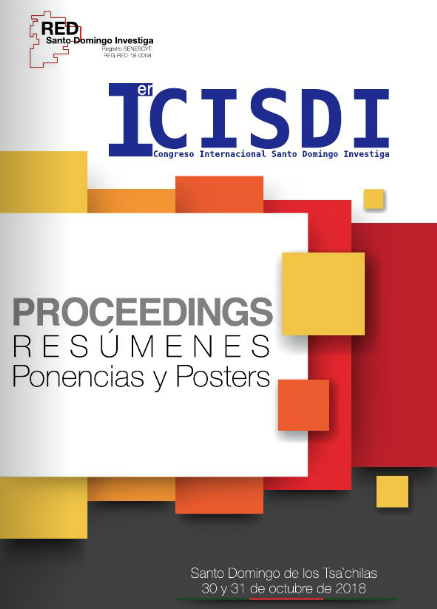TEMA:
Análisis de las propiedades Fisicoquímicas de almidón obtenido a partir de dos variedades de malanga: Colocasia esculenta y Xanthosoma sagittifolium, en la zona de Santo Domingo de los Tsáchilas, año 2018.
Resumen
La malanga es una fuente importante en la alimentación ecuatoriana y uno de los principales productos de exportación; sin embargo su consumo a nivel nacional no es muy habitual, ya que no se ha logrado la industrialización de este producto principalmente la extracción de almidón. Este tubérculo podría ser una alternativa para disminuir problemas de desnutrición y hambre, debido a que cuenta con altas cantidades de almidón y propiedades aptas para remplazar materias primas tradicionales en la industria alimentaria. El almidón se obtuvo de dos variedades de malanga: blanca: (Xanthosoma sagittifolium) y la rosada (Colocasia esculenta) mediante el métodos de decantación el cual consistió en pesar una cantidad determinada de tubérculo, retirar la cascara, licuar y filtrar, dejando decantar por varias horas para extraer el almidón; una vez filtrada la solución se procedió a colocar en tubos de ensayo y se llevó a la centrifuga por algunos minutos de acuerdo al procedimiento establecido; los métodos de extracción fueron aplicados a las dos variedades de malanga; así mismo fueron sometidos a diferentes tiempos y temperaturas de secado. Se evaluaron variables como: contenido de almidón, cenizas, acidez titulable y concentración del ion hidrogeno. Estas variables fueron evaluadas mediante análisis y equipos de laboratorio. Como resultado se obtuvo diferencias significativas en el porcentaje de acidez y contenido de cenizas en las variedades rosa y blanca. La prueba de yodo mostro un alto contenido de almidón, arrojando una coloración violeta azulado. En cuanto al contenido de pH no se encontraron diferencias significativas en ambas variedades. En si la diferencia que mostraron las variables se debe a factores como método de obtención, estado fisiológico del tubérculo, manejo poscosecha entre otros.
Palabras claves: almidón, decantación, centrifugación, malanga, acidez.
The Malanga is an important source in the Ecuadorian diet and one of the main export products; However, its consumption at the national level is not very common, since the industrialization of this product has not been achieved, mainly the extraction of starch. This tuber could be an alternative to reduce problems of malnutrition and hunger, because it has high amounts of starch and suitable properties to replace traditional raw materials in the food industry. The starch was obtained from two varieties of taro: white: (Xanthosoma sagittifolium) and pink (Colocasia esculenta) by decanting methods which consisted of weighing a certain amount of tuber, removing the shell, liquefying and filtering, letting decant several hours to extract the starch; Once the solution was filtered, it was placed in test tubes and taken to the centrifuge for a few minutes according to the established procedure; the extraction methods were applied to the two varieties of Malanga; They were also subjected to different drying times and temperatures. Variables were evaluated such as: starch content, ash, titratable acidity and concentration of the hydrogen ion. These variables were evaluated by analysis and laboratory equipment. As a result, significant differences were obtained in the percentage of acidity and ash content in the pink and white varieties. The iodine test showed a high starch content, yielding a bluish violet coloration. Regarding the pH content, no significant differences were found in both varieties. In itself the difference shown by the variables is due to factors such as obtaining method, physiological status of the tuber, postharvest handling among others.
Keywords: starch, decantation, centrifugation, malanga, acidity.

















